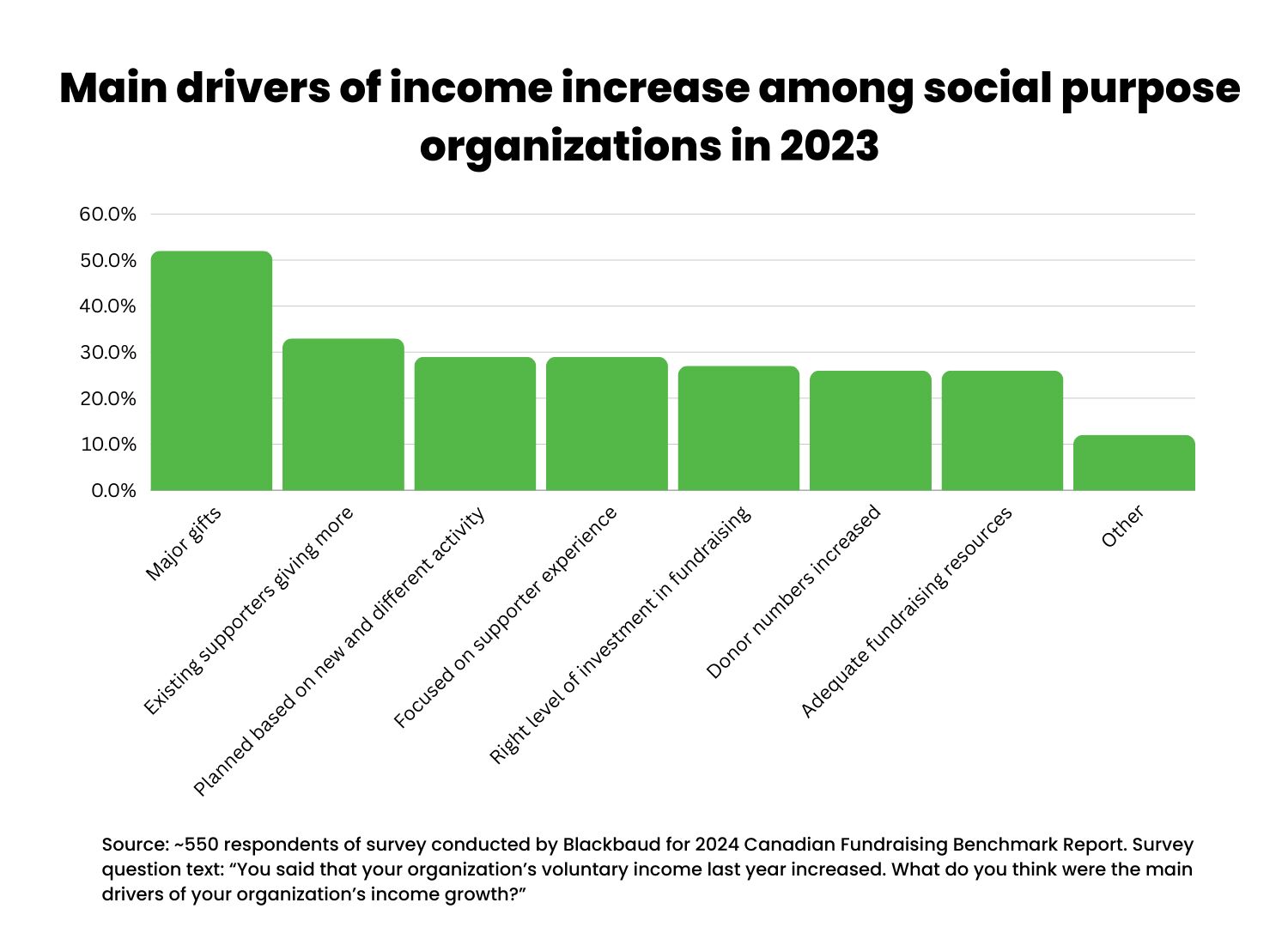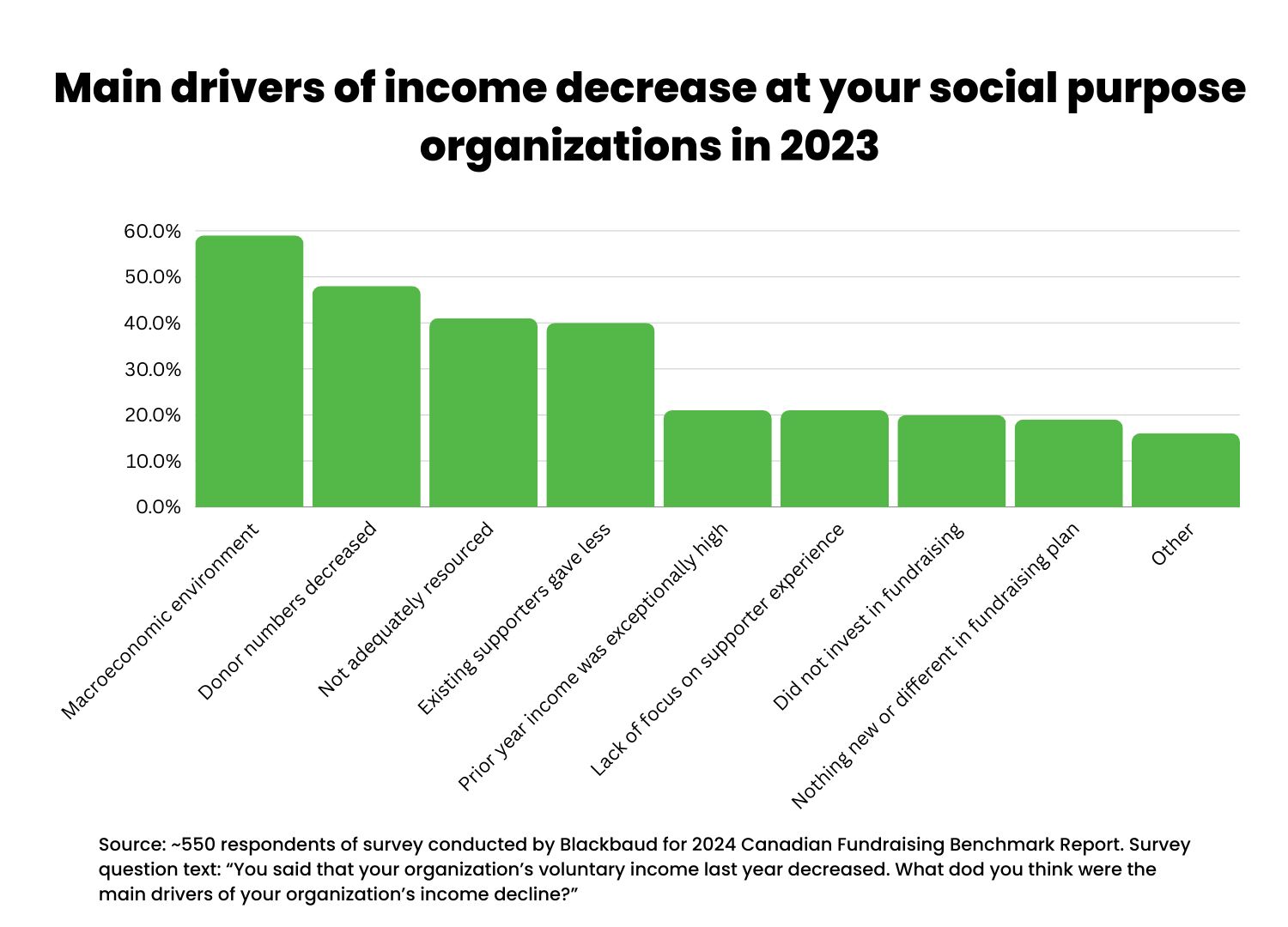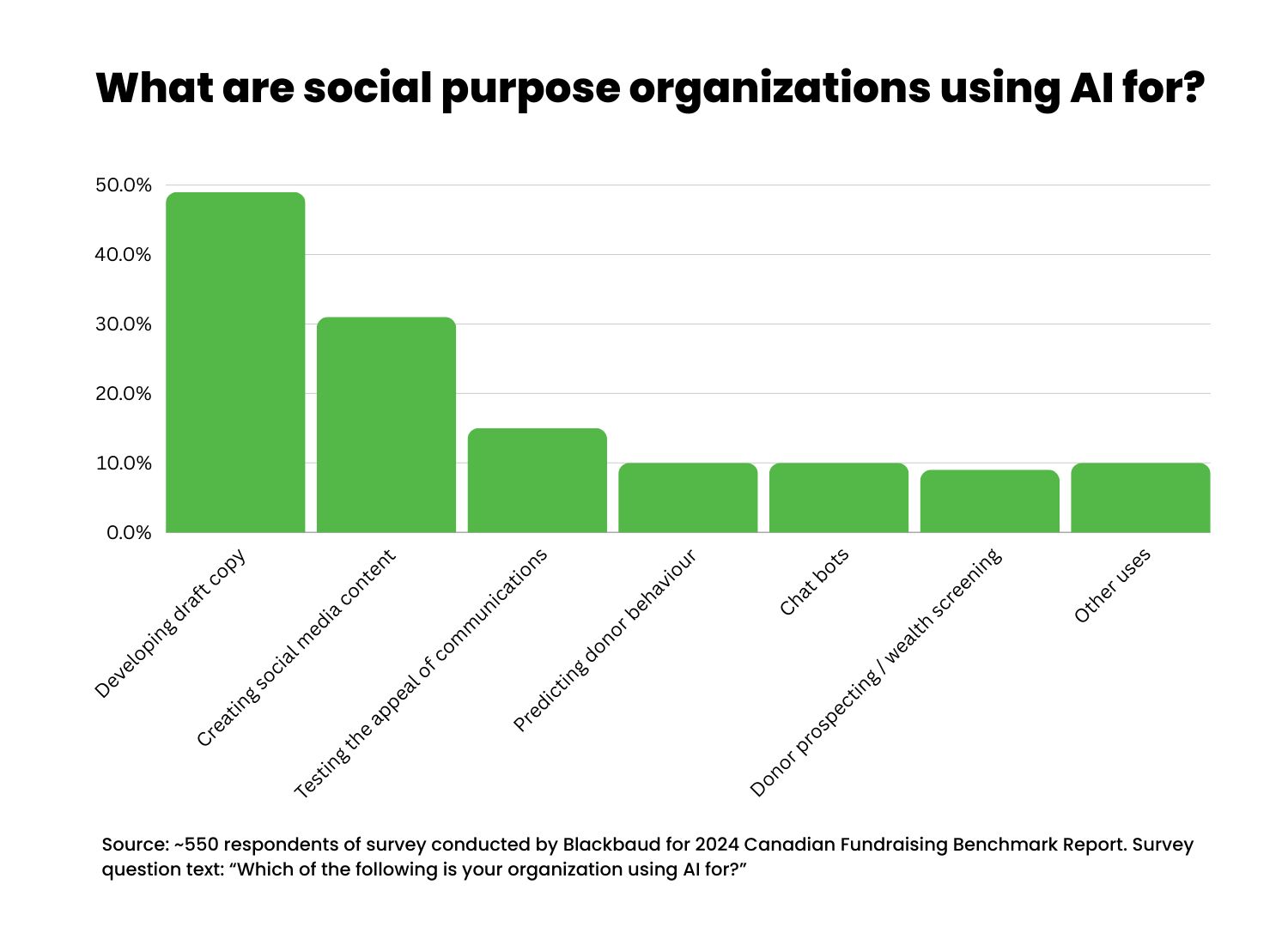Big donations largest driver of non-profit income growth
Why It Matters
For more than a decade, the number of donors reporting a gift on their taxes has declined. But despite tough fundraising conditions, some organizations are continuing to grow by netting large donations.

There’s a lot of gloom in the charitable sector, but a new report shows some organizations’ finances are faring just fine and that major donors are a big part of the reason why.
Non-profit technology giant Blackbaud surveyed more than 550 people—staff and board members of small, medium and large social purpose organizations—in April, asking them to reflect on the last financial year: 60 per cent said their organization met or exceeded fundraising targets during that period.
Major gifts were the most significant driver of revenue growth, according to Blackbaud’s Status of Canadian Fundraising 2024 report.
52 per cent of organizations that saw an income boost attributed the change to an increase in big donations—up eight per cent from 2022.

These findings are largely consistent with broader fundraising trends.
Despite a decade-long decline in the number of Canadians claiming a donation tax credit, the total amount given by Canadians has increased, owing to a growing number of large gifts.
In 2010, 5.7 million Canadians claimed a charitable donation tax credit, helping charities net $8.3 billion nationwide, according to Statistics Canada.
By 2022, the number of people reporting a donation on their taxes dropped by about 800,000 even as the amount collectively gifted rose by $3 billion, according to federal data.
However, not all organizations are escaping the donor drop unscathed.
A quarter of organizations surveyed by Blackbaud reported a revenue decline in 2023. Of those, nearly half said a drop in the number of donors was a major culprit.

AI users more likely to say income increased
The survey found organizations prioritizing the use of artificial intelligence were more likely to report increased income.
About half of the organizations prioritizing AI use said their revenue increased in 2023.
The same was true for just 28 per cent of respondents who did not report prioritizing AI.
“Ultimately, embracing AI not only helps charities become more efficient but also maximizes their impact,” Chris Paver, co-founder of charity AI company Dataro, told Blackbaud.
Drafting communications materials, creating social media content, and testing the appeal of communications messages were the most common uses cited by respondents.

Just 10 per cent of respondents said their organizations are using AI to predict donor behaviour, such as which of their existing donors are most likely to be able to give more.
Resource shortages may be stymieing AI implementation at social purpose organizations, the report found.
64 per cent of respondents said they lack the technical expertise to use AI effectively and 62 per cent said they do not have the necessary resources to explore AI use.
